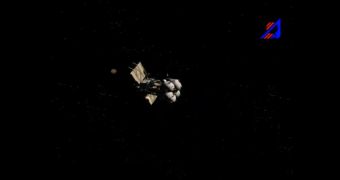A computer glitch was responsible for the failure of the Phobos-Grunt sample-return mission to the Martian moon Phobos, a report by Russian investigators explains. The document finally settles the debate as to what actually happened to the Russian Federal Space Agency's (RosCosmos) probe.
Other reasons that were proposed for the failure included intentional sabotage by foreign powers, interferences with strong military radars belonging to the United States, exposure to space radiation, or the inclusion of defective foreign components in the spacecraft itself.
The Russian news agency Ria Novosti quotes RosCosmos officials as saying that the spacecraft was eventually destroyed by “a programming error which led to a simultaneous reboot of two working channels of an onboard computer.”
The mission was worth $165 million, and was destined to travel to the small Martian moon Phobos, land there for a brief period, collect soil samples, and then return the latter to Earth for analysis.
However, it failed shortly after its November 8, 2011, launch. The computer reboot essentially placed the probe in a state called “safe mode.” This means it immediately entered a Sun-facing orbit, meant to ensure it had sufficient electricity until communications could resume.
But this never happened. The main engine – which was supposed to take it out of Earth's orbit, and onto a course to Mars – never fired, on account of the double reboot. Its computer remained quiet except for two instances.
Both times, Phobos-Grunt communicated briefly with ground stations operated by the European Space Agency (ESA). The experts worked closely with their Russian colleagues, but were unable to relay the necessary commands on time.
The commission also found that the spacecraft continuously adjusted its orbit before crashing. A total of 12 orbital burns were conducted from November to January, 2012. US satellite tracking capabilities confirmed this finding.
What this means is that the spacecraft may have tried to fire up its main engines several times, and then head to Mars, but failed to do so. Eventually, it ran out of fuel as it orbit deteriorated, and then crashed into Earth's atmosphere off the coasts of Chile, on January 15, Space reports.

 14 DAY TRIAL //
14 DAY TRIAL //